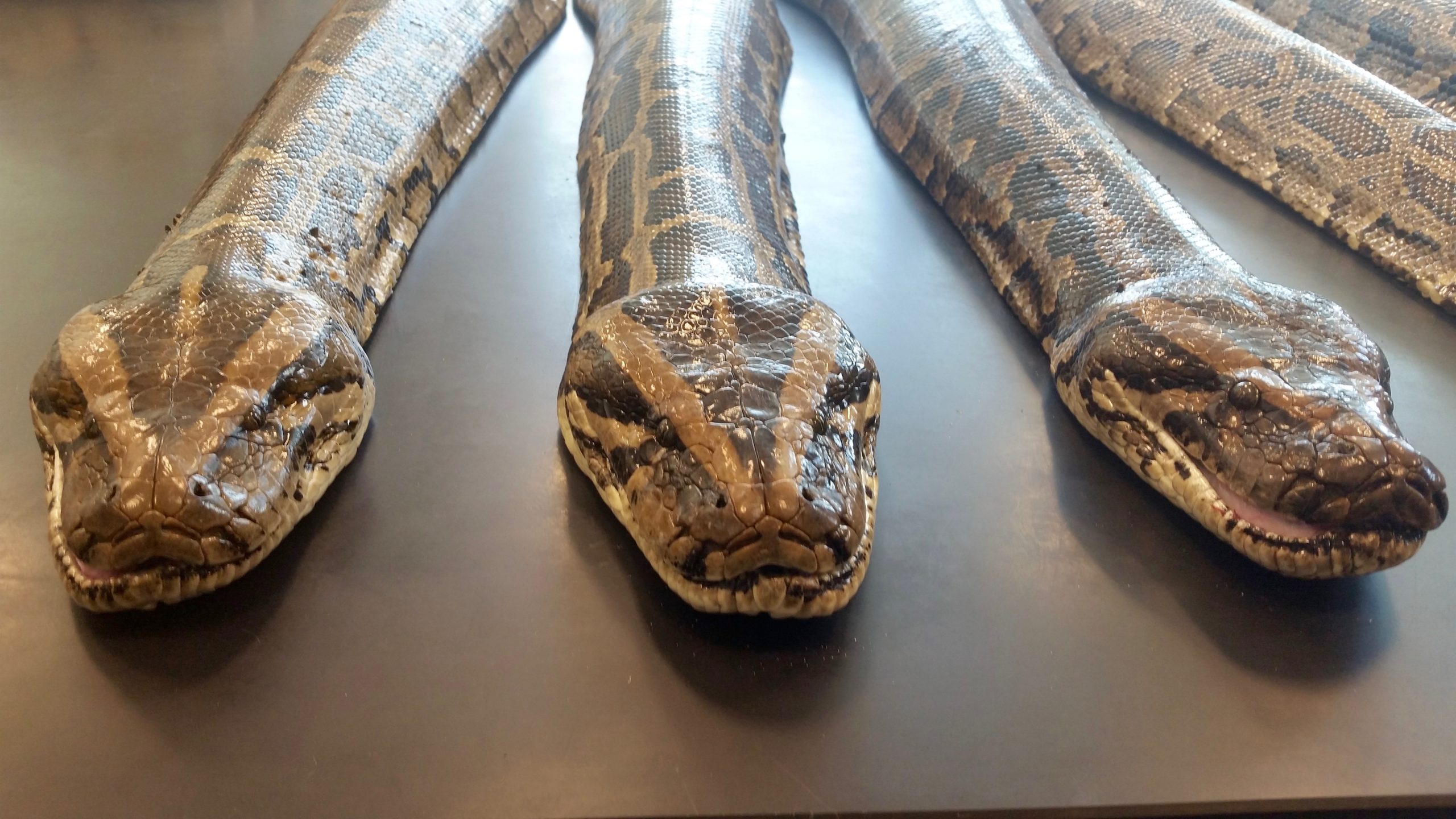You could imagine it as a movie promo for a bad sci-fi flick: “16-foot monster snake found in preserve!” “One ton worth of pythons captured!” “Predator snakes lurk in Collier County wilderness!”
Fiction? Phooey! A team of researchers from the Conservancy of Southwest Florida, Rookery Bay National Estuarine Research Reserve, Denison University and the U.S. Geological Survey did indeed wrestle 43 Burmese Pythons out of rural Collier County—one ton worth of snake, including a surprise: a 16-footer weighing 140 pounds.
As proof, they showed off the five biggest to media representatives Thursday afternoon. The snakes had been euthanized (thank you, very much) before the news crews arrived. They stretched the entire length of a laboratory table.
It’s believed that the Burmese pythons and other big predator snakes slithered into the ’Glades when overwhelmed owners decided that giant reptiles really didn’t make good pets. No one knows how many are out there, but the U.S. Geological Survey says there are easily tens of thousands. The first ones were spotted in Collier in the early 2000s.
“You’re looking at the true scale of the problem out there,” says Ian Bartoszak, a wildlife biologist for the Conservancy. “Just imagine what it took out of our native wildlife biomass to reach lengths of 16 feet and 140 pounds.”
In other words, that’s a lot of birds, rabbits, opossums and other mammals gobbled up. Researchers are still working to determine the impact these giant snakes are having on Southwest Florida’s ecosystem; deeper in the Everglades, they’re wiping out smaller species like marsh rabbits.
The researchers’ primary goal is to learn more about the snakes so that they might devise a management strategy to keep them at bay. (Eradication, at this point, is not considered feasible.)
The 43-snake removal, which took place from Dec. 15 through March 15, is an added plus.
“When you remove 2,000 pounds of snake from an area, it’s got to do something positive for the ecosystem,” Bartoszak says. The largest-ever clutch found in the area was 72 eggs.
The radio-tagging effort started in 2013 and is ongoing. The National Park Service provides these tips on what to do if you see an invasive species and how to turn in a non-domesticated animal such as a snake.





